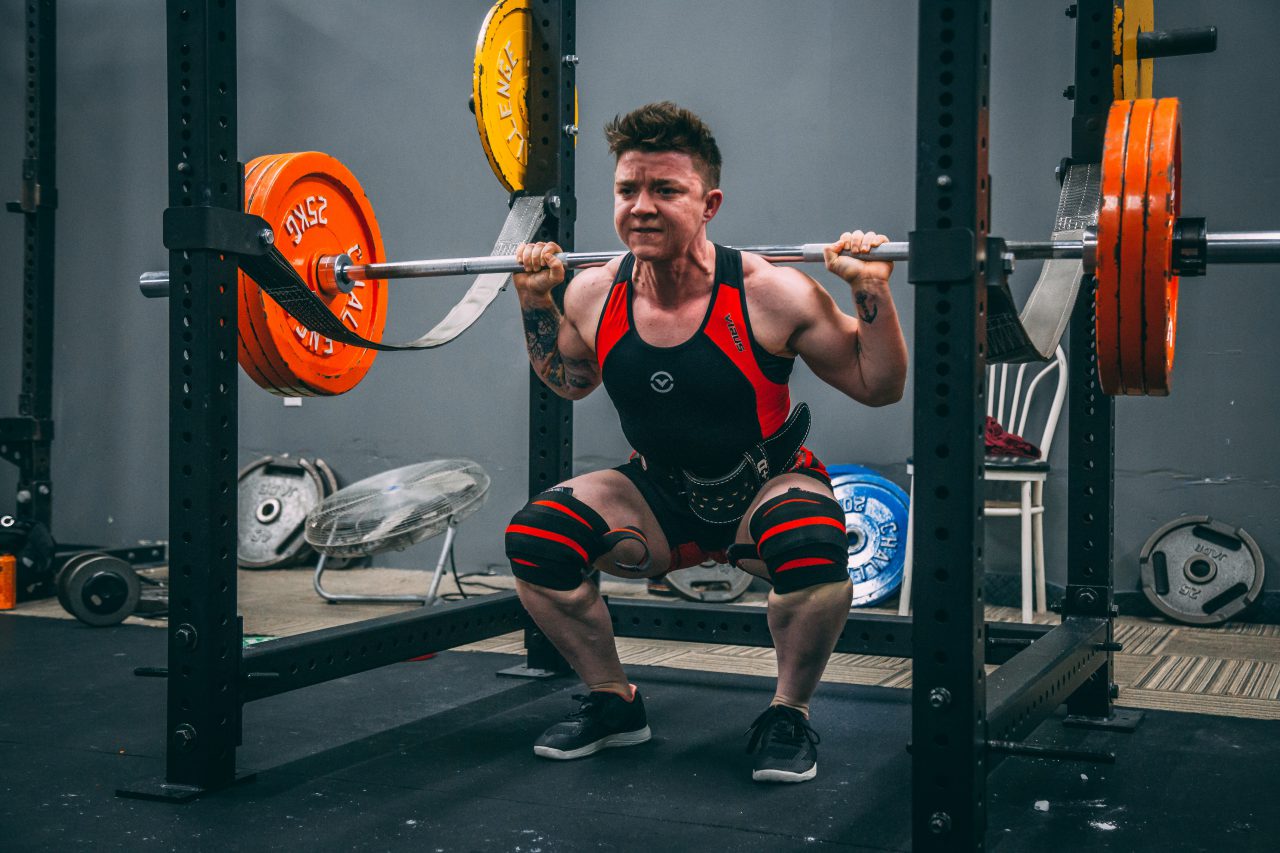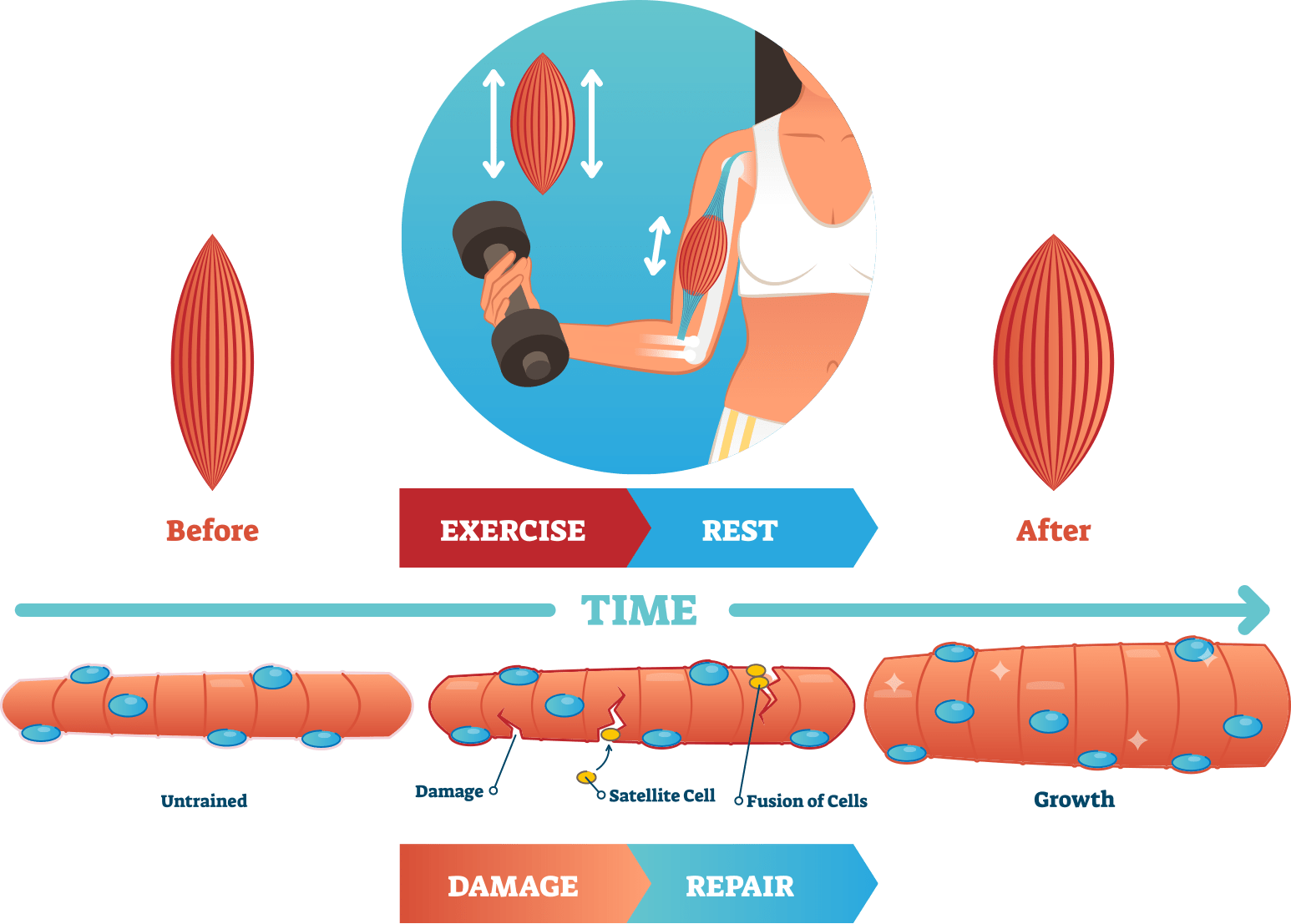
Hypertrophy is not what we commonly think it is. It takes time, patience and technique to maximize muscle growth.
Coming into the gym, we’re ultimately concerned with overall health. We want to lose weight, look better, perform better, put on more muscle, or any other of numerous considerations.
And as coaches, there will be any number of methodologies at play to help achieve these goals. But let’s take a look at hypertrophy, specifically.
We know that muscle shape is predefined. There are preset genetic factors that determine how your muscles connect your bones to produce movement. Once upon a time, people were misled into believing that a muscle’s shape can be altered. And they were not wholly inaccurate.
When we consider, wrongly, altering muscle shape, what we are actually doing is increasing its size. That is hypertrophy. Regarding shape, a circle is a circle, and we cannot change that. But we can make it a bigger circle. Or, in this case, a thicker cylindrical-shaped bit of tissue.
But how?
Well, in a lot of ways. Despite whatever methodology we select, incalculable alternatives are doing the same thing, just doing it differently. But they all have commonalities.
There is a sort of dichotomy in persons who strive for hypertrophy. Neither one is correct, but each presents valuable insights for those in the middle. On one side, there are the artists whimsically selecting loads, reps, movements, and more in this everlasting tapestry of muscle production. On the other hand, statisticians are wholly obsessive regarding the latest study and its data points, suggesting particular training components to produce results reliably.
In my opinion, the wiser of the two does not pick sides. Instead, they see the potential value of the anecdote, the merit of rote learning, and the authenticity of data. So, validating both sides, we can do this comparative analysis of strengths and weaknesses and find several variables that stand above the rest.
1. Load Intensity
This is my favorite variable. I’m admittedly biased. I’ve been training since I was 14, and no one factor has been more significant in generating muscle growth than load intensity. We define it as the strength of a stimulus (load) relative to limit strength, the maximal weight we can do once in an all-out effort. The caveat here is that if you are new to training, do not attempt 1RMs. That’s a different topic. But with load intensity, we are tailoring what weights to select for a trainee concerning their strength. And we typically break it into percentages (i.e., 60%, 70%, 85%, 95%, etc of 1RM).
2. Volume
This one gets way too much attention, but it is crucial. Laypersons tend to fixate on volume considerations and become volume-centric with their training, but because of a lack of appreciation for other variables (e.g., sleep, recovery, nutrition, caloric intake, load intensity, stressors, etc.), do not use volume well. It is defined as the total amount of weight lifted by reps/sets per session.
The mistake commonly made here is that higher repetitions equate to more muscle, which is false. In academia and application, we have ample evidence to suggest strongly any number of repetitions/sets can produce hypertrophy if the load is sufficiently taxing. The question to ask here is, “If I can move X weight 30 times, can I move a heavier (intense) weight 10 times?” Yes. You can.
3. MEV/MRV Scales
Credit goes to Dr. Mike Israetel on this. He developed a theory for periodization known as MEV/MRV scaling as part of his Renaissance Periodization model.
MEV = Minimum Effective Volume is the amount of training minimally necessary for muscle growth. What you need to know is that good programming leaves room to grow. We establish minimally effective loads, leave room for progress, and go along with training from week to week, cycle to cycle.
This sets MAV = Maximum Adaptive Volume, which provides a continual marker to overload progressively. Since this is dynamic, good coaching helps the trainee monitor MAV to allow for recovery. That leads us to MRV = Maximum Recoverable Volume. The gist here is that you can only train so hard for so long until it eventually dips below your recovery rate. I cannot stress this enough; if you overtrain, you will not gain.
4. Recovery
This is a catch-all, categorically speaking. Recovery takes into account diet, sleep, soreness, Caloric intake, nutritional intake, environmental and psychological stressors, and more. If I suggest one thing that trainees generally struggle with, it is recovery. People who like to train typically make it a bit of an obsession. Depending on how you train, recovery considerations differ. Within strength training, it is an absolute must. The best way to explain why this is so important without going long-form is that training sets conditions for hypertrophy; rest allows it to occur.
5. Diet/Sleep
No, we’re not overlapping; these factors deserve individual attention. Diet is more than macros. We have to consider vitamin and mineral content as well. These play forward in nuanced ways that people seldom contemplate. Minerals, for example, serve a critical role in cellular health. And we ought not to forget that muscles are bundles of cells.
Moreover, mineral and vitamin intake deficits confound the utility of everything else we ingest, even if we’re hitting daily macros. There are many things chicken, rice, and broccoli do not offer, and diets lacking in these critical items (e.g., free radicals) are often attached to bodies that struggle to meet performance standards that eventually negatively affect hypertrophy. Then there is sleep. Oh boy, is this important.
Sleep modulates recovery. Without rest, our bodies miss their most crucial recovery window. And, keep in mind, muscle building occurs at home, under the comfort of a pillow, and on a full stomach. Training is just damage that needs repair.

6. Stressors
The elephant in the room is life. We do not get to live the lives of professional athletes who live, breathe, and eat human performance. The rest of us have regular jobs, families, friends, a social life to manage, and stresses to mitigate. Any number of stressors can have an adverse effect on the complexities of neurological function and, by extension, impact our performance and health goals. A good program considers these things and has a deep appreciation of our humanity. Far too often, overzealous provocateurs from the shock and awe community frame trainees like machines or romanticize grinding them into the ground. It’s poor practice and ultimately poses more potential for harm than good. Extremes are okay, but exceeding them is often, within reason, not.
7. Movement Selection
Frankly, this should be number one.
If I could go back in time and never touch a machine and instead master the basics of barbell work, I’d do it. I’m not anti-machine work. It has its place. But in my opinion and personal training experience, machines are a timesink. You can clear an entire gym floor of machines because barbells, dumbells, and other free-resistance exercises encompass and surpass every one of them. They’re just harder to learn and easy to do suboptimally, and, unfortunately, not many commercial gym CPTs know how to use them well.
A shroud of mystery covers them in most of these settings. Only knowledgeable, experienced persons or practitioners of barbell work can help with that. And they’re relatively rare, depending on where you train. But they get the most muscle mass involved, scale absurdly well with intensity, offer gauges for volume, and are designed to optimize human performance. If you want muscle, barbells are royalty.
When you consider increasing muscle size, all of these factors come into play. It is as much an art form as it is a science. And while there are more concise ways to put it, hypertrophy is not what we commonly think it is. It takes time, learning, patience, intelligence, technique, and reactive thinking to maximize muscle growth. It is still a wildly general perspective on how to approach it.
My recommendation is to narrow that perspective to reliable, sustainable practices that create a predictive success model.



